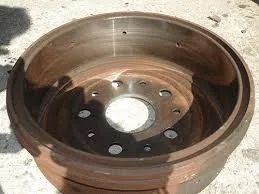drum versus disc brakes
Drum Versus Disc Brakes A Comprehensive Comparison
When it comes to vehicle braking systems, two main types dominate the market drum brakes and disc brakes. Both have their unique characteristics, advantages, and disadvantages. This article explores the differences, performance, and suitability of each to help you understand which system might be better for your needs.
Understanding the Basics
Drum brakes consist of a cylindrical drum that rotates with the wheel, inside which brake shoes press outward to create friction. The design has been in use since the early 20th century and is still prevalent in many economical cars and heavier vehicles like trucks and buses due to its reliability.
In contrast, disc brakes feature a flat, circular disc that rotates with the wheel. Brake calipers, containing brake pads, clamp down on the disc when the brake pedal is engaged, generating friction to slow down or stop the vehicle. Developed in the 1950s, disc brakes have gained popularity, especially in modern performance vehicles and high-end models.
Performance and Heat Dissipation
One major advantage of disc brakes is their superior ability to dissipate heat. The open design allows for better airflow, which prevents brake fade—a reduction in braking effectiveness caused by overheating. This is particularly important for high-performance driving or in situations that demand prolonged braking, such as downhill driving.
On the other hand, drum brakes are more prone to heat retention. Once they heat up, their performance may degrade, leading to potential safety issues. However, they can be more effective in certain low-speed scenarios, where their increased surface area can provide sufficient stopping power without overheating.
Maintenance and Durability
When considering maintenance, drum brakes typically require more upkeep than disc brakes. The enclosed design makes it more challenging to inspect and repair components like brake shoes and springs. Additionally, if moisture accumulates inside the drum, rust can form, which may impair performance.
drum versus disc brakes

Disc brakes, however, offer easier maintenance. Their exposed components can be readily inspected for wear. Changing brake pads is generally simpler and quicker than replacing shoes and hardware in drum systems. Furthermore, because disc brakes are less likely to suffer from moisture-related issues, they may have a longer lifespan, depending on driving conditions.
Weight and Cost Considerations
In terms of weight, drum brakes are generally heavier than disc brakes, which can affect the overall weight of the vehicle. For performance cars, every pound counts, making disc brakes a more popular choice. However, drum brakes often come at a lower upfront cost, making them a more economical option for entry-level vehicles or those used primarily for light-duty purposes.
Usage Scenarios
The choice between drum and disc brakes often comes down to the intended use of the vehicle. Many entry-level cars still utilize drum brakes on the rear wheels due to cost-effectiveness and adequate stopping power for daily driving. In contrast, most modern vehicles, especially performance models and SUVs, feature disc brakes on all wheels to ensure optimal performance and safety.
For racing and high-speed applications, disc brakes are almost universally favored. Their ability to withstand extreme conditions and maintain performance makes them indispensable for any serious motorsport vehicle.
Conclusion
Ultimately, both drum and disc brakes have their places in the automotive world. Drum brakes offer affordability and sufficient stopping power for everyday driving situations, making them suitable for budget-conscious consumers. Disc brakes, on the other hand, provide superior performance, heat dissipation, and ease of maintenance, making them the preferred choice for high-performance and heavy-duty applications.
When deciding which braking system is right for you, consider factors such as driving style, type of vehicle, and maintenance preferences. Each system has its strengths and weaknesses, and understanding these will help drivers make informed decisions that best suit their needs and enhance their driving experience.
-
The Power and Reliability of Brake Drumsవార్తలుAug.27,2025
-
The High-Quality Truck Brake Drumsవార్తలుAug.27,2025
-
Quality Brake Drums for Reliable Performanceవార్తలుAug.27,2025
-
Get the Quality Semi Trailer Brake Drums for Your Fleetవార్తలుAug.27,2025
-
Everything You Need to Know About Brake Drumsవార్తలుAug.27,2025
-
Enhance Your Vehicle's Performance with Reliable Brake Drumsవార్తలుAug.27,2025
-
Truck Drum Brake Spring Replacement Procedureవార్తలుAug.22,2025


